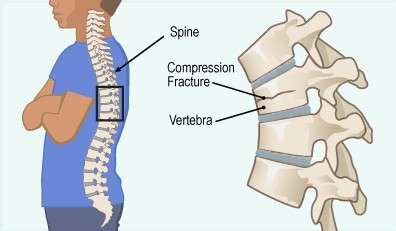Rebound O&P
Updated 9:51 AM CST, Mon February 17, 2025
Published Under: Orthotics

Spinal fractures can be a challenging condition, affecting mobility, causing pain, and potentially leading to long-term complications if not properly managed. One common method of treatment involves the use of back braces, which provide support, stability, and protection to the spine during the healing process. This blog explores the different types of back braces used for spine fractures, their purposes, and their benefits.
1. Cervical Braces
Cervical braces are designed to support the neck and upper spine. They are commonly used for fractures in the cervical region (C1 to C7 vertebrae). These braces limit neck movement to prevent further injury and promote healing.
Types of Cervical Braces:
- Soft Collar: A flexible brace providing mild support, often used for minor injuries or after a more rigid brace.
- Rigid Collar: Such as the Philadelphia or Miami J collars, these are more supportive and used for moderate injuries or post-surgery stabilization.
2. Thoracic Braces
Thoracic braces are used to stabilize fractures in the upper and mid-back region (T1 to T12 vertebrae). These braces restrict movement in the thoracic spine to allow for proper healing.
Common Thoracic Braces:
- Jewett Brace: Designed to limit flexion (forward bending) of the spine, this brace is often prescribed for compression fractures.
- TLSO (Thoracolumbosacral Orthosis): Covers the thoracic and lumbar spine, providing comprehensive support for more severe injuries.
3. Lumbar Braces
Lumbar braces focus on the lower back (L1 to L5 vertebrae). These are used to reduce motion, alleviate pain, and provide support during recovery from lumbar fractures.
Examples of Lumbar Braces:
- Rigid Lumbar Corsets: Provide firm support and are often used post-surgery or for fractures requiring significant stabilization.
- Flexible Lumbar Supports: Allow for some mobility while offering compression and support, suitable for minor fractures or as a transitional brace.
4. Sacral Braces
Sacral braces are designed for injuries in the sacrum, the triangular bone at the base of the spine. These braces stabilize the lower spine and pelvis.
Key Features:
- Typically integrated with lumbar braces for combined support (LSO - Lumbosacral Orthosis).
- Can include padding or rigid panels to provide targeted stabilization.
5. Spinal Orthoses for Complex Fractures
For severe or complex spinal injuries, advanced orthoses may be required:
- Halo Brace: A rigid device used for cervical and upper thoracic spine fractures. It consists of a ring secured to the skull with pins and attached to a vest.
- Custom-Molded Braces: Tailored to fit the patient’s unique anatomy, these provide maximum support for extensive injuries.
Benefits of Back Bracing
- Stabilization: Braces keep the spine in proper alignment, reducing the risk of further injury.
- Pain Relief: By limiting movement, they reduce strain on the injured area and alleviate pain.
- Support During Healing: Braces provide a controlled environment for bone healing.
- Enhanced Mobility: Allow patients to remain mobile while protecting the spine.
Choosing the Right Brace
The type of brace prescribed depends on several factors:
- Location of the Fracture: Different regions of the spine require specific braces.
- Severity of the Injury: More severe fractures necessitate rigid or custom-molded braces.
- Patient Needs: Comfort, lifestyle, and mobility goals play a role in selection.
Who to See for a Back Brace
To ensure proper fit and effectiveness, it is crucial to consult the right professionals:
- Orthopedic/Spine Specialist: These doctors diagnose spinal fractures and recommend treatment, including the type of brace needed.
- Physiatrist: A specialist in physical medicine and rehabilitation who may assist in managing your recovery and prescribing bracing.
- Orthotist: A healthcare professional trained in designing and fitting orthopedic braces. They will ensure the brace fits correctly and provides optimal support.
- Physical Therapist: Can provide guidance on how to wear and use the brace effectively as part of a rehabilitation program.
Duration of Back Brace Use
On average, patients typically wear a back brace for 6 to 12 weeks, depending on the severity and location of the fracture. The exact duration will be determined by your healthcare provider based on your healing progress and specific needs.
Conclusion
Back bracing is a vital component of spinal fracture management, offering support, stability, and protection during recovery. Whether you’re dealing with a minor compression fracture or a more severe injury, the right brace can make a significant difference in your healing journey. Always consult with your healthcare provider to determine the most appropriate brace for your specific condition.

Comments